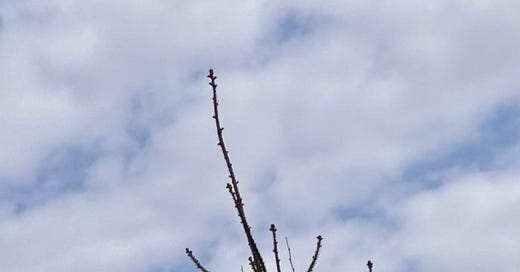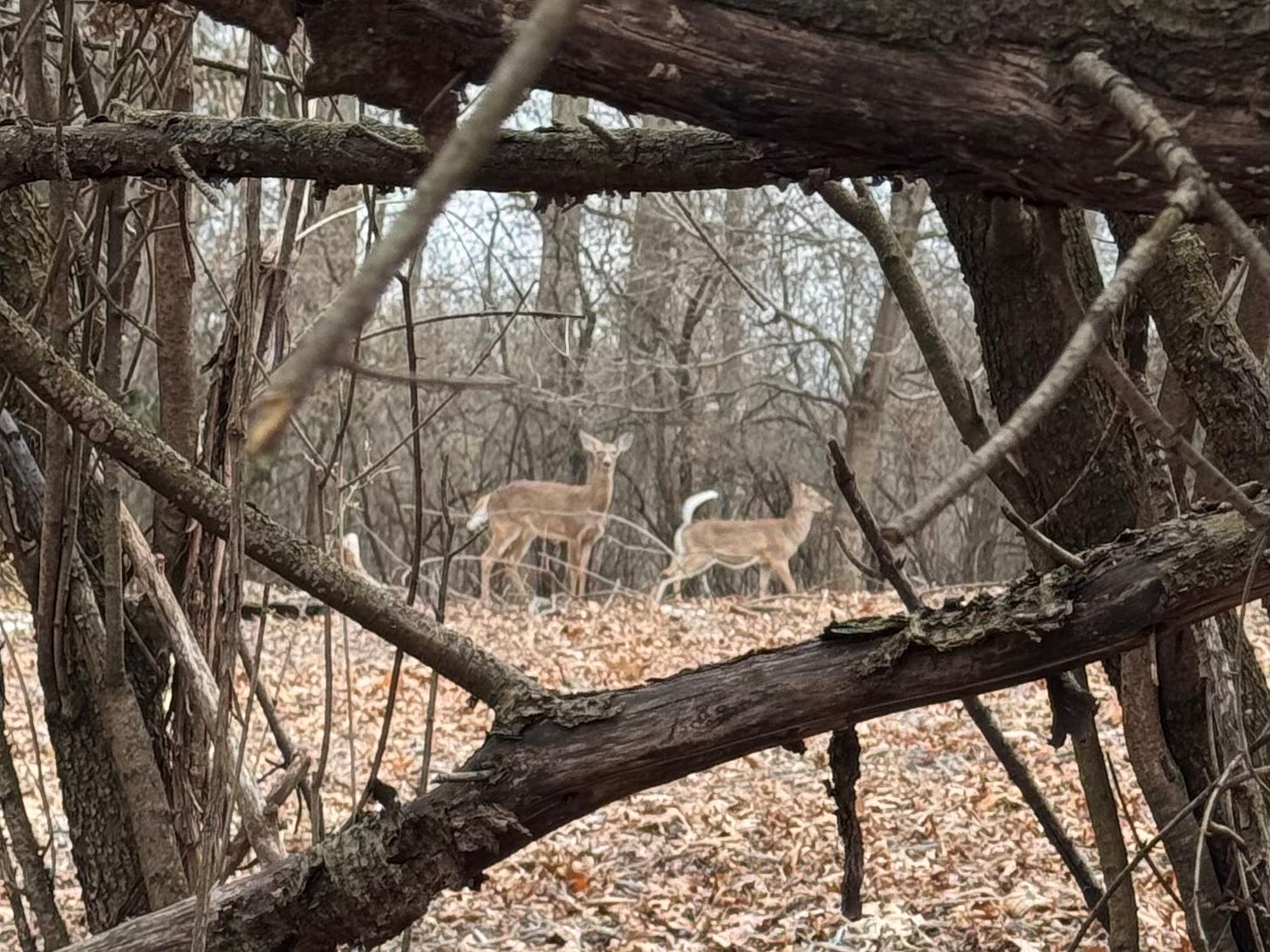We’re back in Michigan now after several days of Spring clean up work at the Cottage. The big news is our two oldest grandchildren have made their final college decisions! Next Fall they will be attending University of Vermont and Indiana University. We are so proud and excited to watch this next generation leave the nest and build their future!
While our bird friends lay their eggs, feed their chicks, then move on after a few months, we humans take a bit longer to launch our offspring!
A lone crow escorted me on my walk back from the mailbox yesterday. He called out his warning, staying just ahead on the path. I’ve got my eye out for the crow’s nest. They should start to build them any day now. Once the trees leaf out the nests will be hard to spot.
I spotted a fur ball on the path under a giant willow, the favorite perch of a Cooper’s Hawk. Usually the rabbits are eaten by larger hawks like the red tails. The Cooper’s Hawk that hangs out here seems to prefer eating other birds rather than rabbits, but who knows? Perhaps an owl?
The sentinel crow kept up his call, alerting a pair of deer ahead of me, who bounded through the woods and then watched me from a safer spot.
I wonder if these are the same deer that ate up almost all the tulips I planted last fall. They certainly have expensive tastes!
Yesterday a raft of several hundred coots sheltered in a cove at the Lake, waiting for warmer weather and a favorable breeze. Though some breed in Northern Ohio and Indiana, most of these eastern coots will travel further north to nest.
Coots, also known as Mud Hens (the mascot of the Toledo Mud Hens Baseball Team) have some interesting reproductive habits. They mate for life, even though they are quite gregarious and travel in large groups.
The male coots build a floating platform on which to mate. The platform deteriorates after use. The females then build floating nests in the reeds and cattails, although the male does help. They may build several nests, but select only one, which needs constant repair to keep it afloat.
Mother Coot and kids. Credit: Mike Baird, CC
The mother coot prefers those chicks with the brightest feathers, so newly hatched chicks sport unique colors, which fade as they grow older. Parasitism is common, but the mother’s are able to distinguish their chicks from those hatched from other’s eggs by birth order and hormones. She imprints on the first egg to hatch. Later hatchlings that don’t pass the smell test may be drowned if she deems them not her own.
We’re back in Michigan now, and our resident mallard has laid another egg! There may be a fourth one under the leaves.
I was surprised to learn that she will lay one egg every day or two until there are as many as a dozen eggs. It is only after she is done laying that she will began incubation, which will then last for four weeks.
How many eggs will she lay? Stay tuned!
We are trying to decide on a good name for our resident Mother Duck.
Any suggestions? We should probably name the Dad too.
If we get some good name suggestions I’ll post a poll.
Thanks for hanging out! So glad you’re here~!










The church close to my home has a big pond and the Canadian geese raise their chicks close to the pond. They do make a mess on the walking track, and you have to be careful when the eggs hatch because if you even look at the chicks the mom and dad are coming after you.
Lots of new life in your part of the world. Me Duck is a very popular term of polite affection in English up North. Mostly north east Midlands maybe Lincolnshire and Hull and part of Yorkshire. That's mostly where you hear it. It's nice. You buy a bar of chocolate in a shop,where a person still takes your money,and as they hand you your change (what's that ?) they say,"here y'are me duck". It's friendly and lovely. You dont get that from a card scanner!